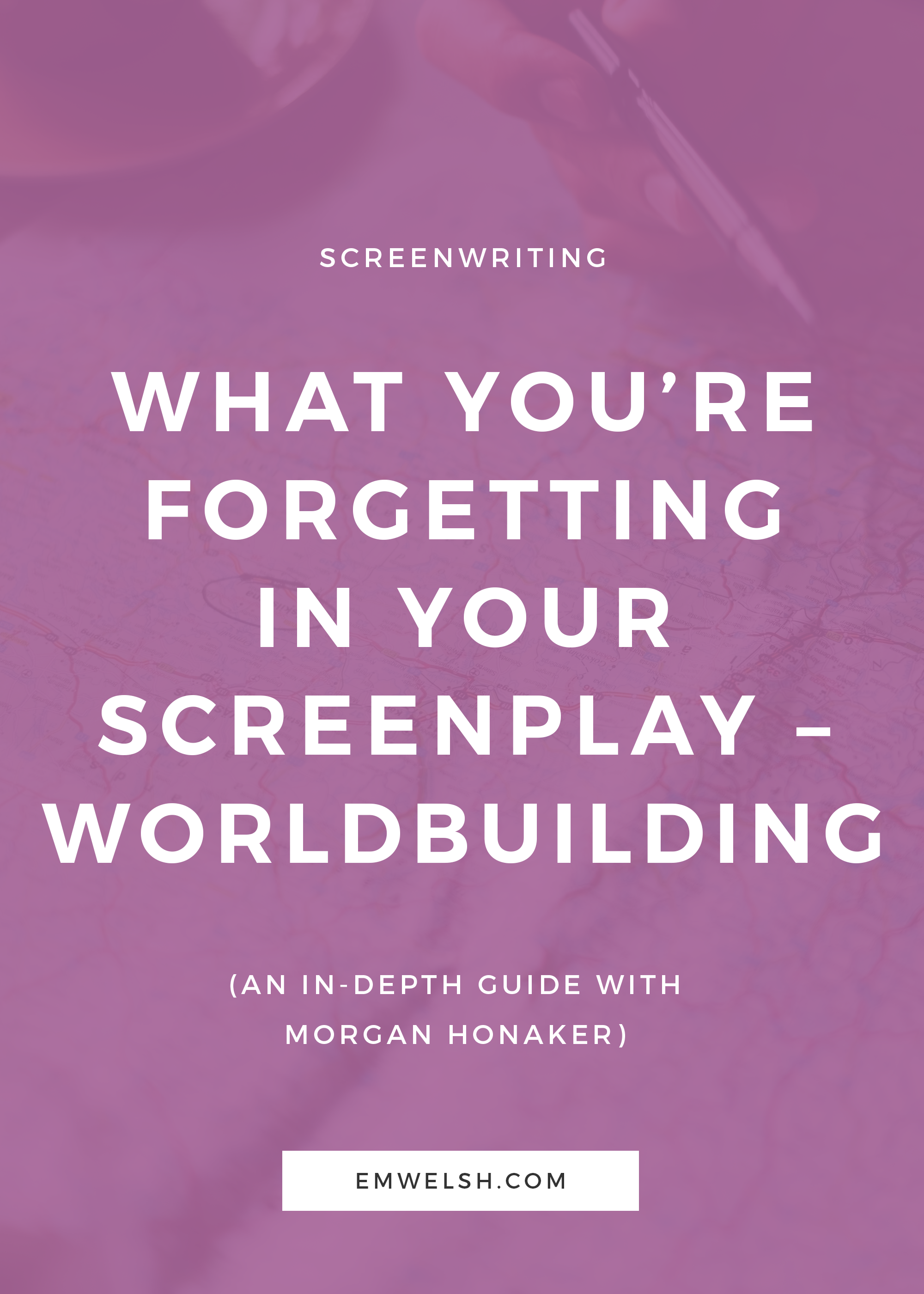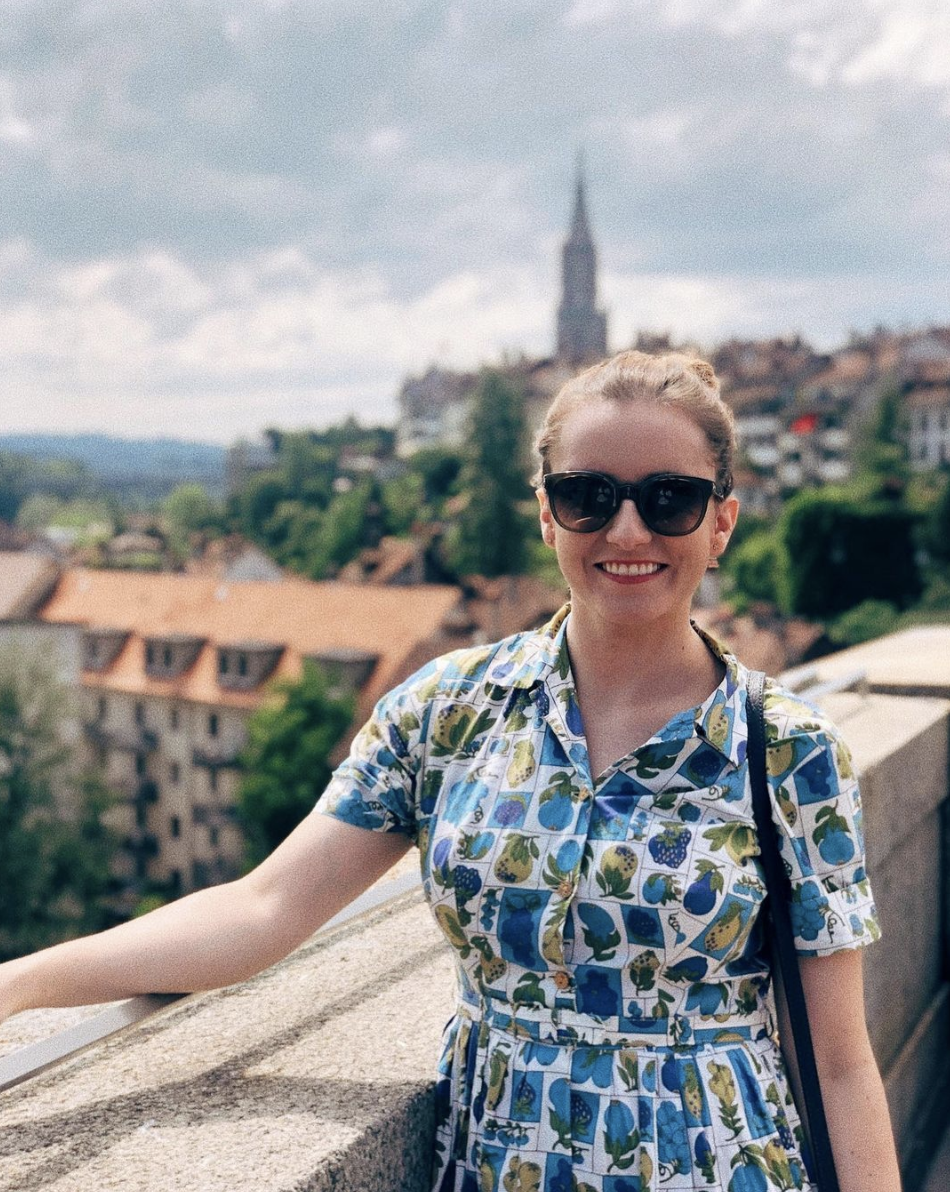What You’re Forgetting in Your Screenplay – Worldbuilding
/When it comes to worldbuilding, I must admit, I usually neglect it, be it on this blog, where I rarely even mention it, or in my own screenplays. Instead, I'm all about characters and getting them "right" so that often I completely forget to think about the world.
For a while, I assumed this was okay and that I was just writing in "reality" – especially for my films. But after reading Morgan's article of worldbuilding I came to quickly realize that all of my favorite movies have a deep layer of worldbuilding, I just wasn't seeing it! In fact, I was often mistaking this worldbuilding for "style."
As a result, making films like Midnight in Paris or Eternal Sunshine of the Spotless Mind or Donnie Darko always felt like an elusive idea to me. I felt like these filmmakers and writers just "got it" and that if I kept writing enough, maybe I would too.
But now I see that a big backbone to these stories I love is the worldbuilding. So, to better teach you about how to build your own worlds in film, I'm handing today's post over to my friend and video essayist, Morgan Honaker.
If you’ve ever written a screenplay, one piece of advice you’ve almost certainly heard is to focus on character, perhaps over anything else. Film critics, historians, and screenwriters alike often emphasize character over plot, or even claim that good characters will create a good plot. After all, what would The Dark Knight be without the Joker, or Fargo (1996) without Marge?
Undeniably, good characters are necessary for good writing, but they aren’t the only thing you need for your story to be great. As interesting as your characters might be, if the world around them isn’t interesting, if it doesn’t set itself apart from other universes, and - most importantly - if it doesn’t challenge the protagonist, your story might still fall flat.
Let’s look at Marge from Fargo for a moment. Marge, a pregnant, optimistic, capable cop, is emblematic of the ultimate nurturing, protective female - a veritable mother-earth character. Now, while Marge’s character is undeniably wonderful, she’s made better by the icy, dead land of Fargo, Minnesota. The violent, cold world around Marge makes her character more interesting because it acts as her foil, juxtaposing and challenging her cheery demeanor with its dreary bleakness.
What I’m getting at here is that while character is important, so is worldbuilding.
What Exactly is Worldbuilding?
Simply put, worldbuilding is all in the name; as a writer, you need to fashion a world for your characters to inhabit. Creating a universe from nothing can be as complex or as sparse as you want it to be - it’s your world after all! However, having a fleshed-out, organized, consistent framework for your world is essential in creating a solid universe, so here are a few tips that might help you get started . . .
1. Pick a specific setting.
Whether you’re creating a new world entirely, remixing elements from a few of your favorite worlds, or basing your world on reality, make your setting specific. Pick a place. Give it a name. Pick a time period (or choose to make the time period undefinable a laIt Follows). No matter what you choose, be definitive. Picking a specific setting can help to shape your characters and the challenges they will face.
2. Define clear, immutable rules.
Every universe, no matter how fantastical, needs rules to help its audience orient itself within your newly created world. Breaking the rules of your own universe looks sloppy and can be incredibly frustrating to viewers. For example, when I went to see Harry Potter and the Deathly Hallows Part 2, I was dumbstruck when the flashbacks of Harry’s mother showed a girl with brown eyes. Throughout all seven previous films, Harry was told by various people that he had his mother’s eyes, which I assumed were blue since Harry’s eyes are blue. Apparently not.
These are the sort of continuity mistakes you can avoid by making rules for your universe, whether they’re the laws governing the logic of your world or small, established details. Now, this doesn’t mean that your world can’t be chaotic, but it does mean that you have to establish that your world is chaotic. See David Lynch’s films for a how-to guide on chaotic, rule-bound universes.
3. Make your world challenge your characters.
As the great Kurt Vonnegut said in his eight tips for fiction writers, “Be a sadist. Now matter how sweet and innocent your leading characters, make awful things happen to them — in order that the reader may see what they are made of.” One of the easiest ways to make horrible things happen to your characters is to make the world around them volatile to their beliefs or even physically harmful to them.
For instance, David Fincher’s Se7en depicts a dank, malicious world ruled by apathy that has worn down Detective Somerset and will eventually destroy Detective Mills. 127 Hours creates a world that physically challenges its protagonist and manages to do so through scenery alone (in fact, with just one rock).
4. Don’t be afraid to make it weird.
Really. Don’t be afraid to make it as weird as you want. One of the films that I consider to have the greatest worldbuilding is Baz Luhrmann’s Moulin Rouge!, and it’s totally odd. People can float on clouds, everyone is always beautiful even when they’re hacking up blood, the moon sings, and music has no place in time, which means that you might hear “Smells Like Teen Spirit” in the middle of a “Can Can” dance. Oh, and it’s also a musical, so sporadic dancing and singing is totally cool. Even still, Moulin Rouge!’s absurdity fits within the cinematic universe Luhrmann has created, because he establishes from the beginning of the film that his world is not logical or realistic.
As long as you have rules, your world can be as weird as you like. Annie Hall is considered by many to be one of the greatest films ever made, and Woody Allen’s worldbuilding in that film allows for some weird things to happen, such as a man directly addressing the audience to complain about someone while time freezes around him. Let me say it again: don’t be afraid to make it weird.
So, now that you have some tips for starting off your world, let’s look at a few examples of some common worldbuilds that you might find useful as a template for your own creation.
The Not-So-Different Parallel Reality
Strictly speaking, every film exists in a parallel reality to our own because every narrative is snipped and pulled into a shape more suited for an audience to view, even if the film is based on real events, so this category deals with those films that exist in a world that could plausibly be our own. However, the “not-so-different parallel reality” does not just include biopics like The King’s Speech or docudramas such as Frost/Nixon.
Pulp Fiction is one of the best examples I have for this category of worldbuilding. The clothes are familiar, the people don’t have superpowers, and the plethora of pop culture references makes it pretty clear that this world is supposed to resemble reality. Yet, it doesn’t quite seem like our world. The dialogue is too witty, the violence is a little too bloody, and the circumstances are pretty out there. Still, it’s not beyond the realm of possibility that Pulp Fiction’s world is a not-so-different version of our own.
The Fantasy World
Think The Fifth Element, Lord of the Rings, The Grand Budapest Hotel, or The Princess Bride - these worlds are definitely not happening in our reality and have established their own lands, languages, and customs. This type of world requires the most attention, and therefore can be the most difficult in terms of cohesion and continuity (for example, why didn’t Frodo and Sam just take the Eagles to Mordor in The Lord of the Rings?). However, these worlds are often the ones people fall the most in love with, flaws and all, so don’t be afraid to attempt something more daring if you want to create your world from scratch.
The Hybrid World
This worldbuilding is a combination of the previous two - worlds in which fantastic things happen in a reality that could possibly be our own. Scott Pilgrim vs. the World is an excellent example, as is Donnie Darko.
Scott Pilgrim vs. The World | © Big Talk Films
Donnie Darko | © Flower Films
These two films have references to pop culture in our reality but are also filled with things that definitely cannot happen in real life, such as kicking someone so hard that they explode into coins or seeing water tubes of non-chronological time. Often, I’ve found that this category yields the weirdest rewards and often garners a cult following.
Just, Please, Don’t Overlook Worldbuilding
Obviously, the three categories of worldbuilding that I summarize above are broad and by no means exclusive - they’re just options to get you thinking in a loose sense about what kind of world you might want to create. Maybe next time your screenplay or story is feeling flat, or your characters aren’t as dynamic as you want them to be, you’ll revisit your worldbuilding. Maybe you’ll even start your script with your world rather than a character, even if you just pin down your setting in a general sense, such as 1945 New York or 18th century Vienna. Whatever you do just, please, don’t overlook worldbuilding.
About Morgan
A recent graduate of the University of Texas at Austin, Morgan Honaker is an audio engineer based in Austin, Texas who specializes in production sound recording as well as post-production sound mixing, Foley recording, sound editing, and sound design. She focuses on audio for film and video games but also dabbles in composing and live-event sound engineering. In addition to audio, Morgan also creates video essays on her YouTube channel 'Film in Deep Focus' where she comments critically on different aspects of film and television.





